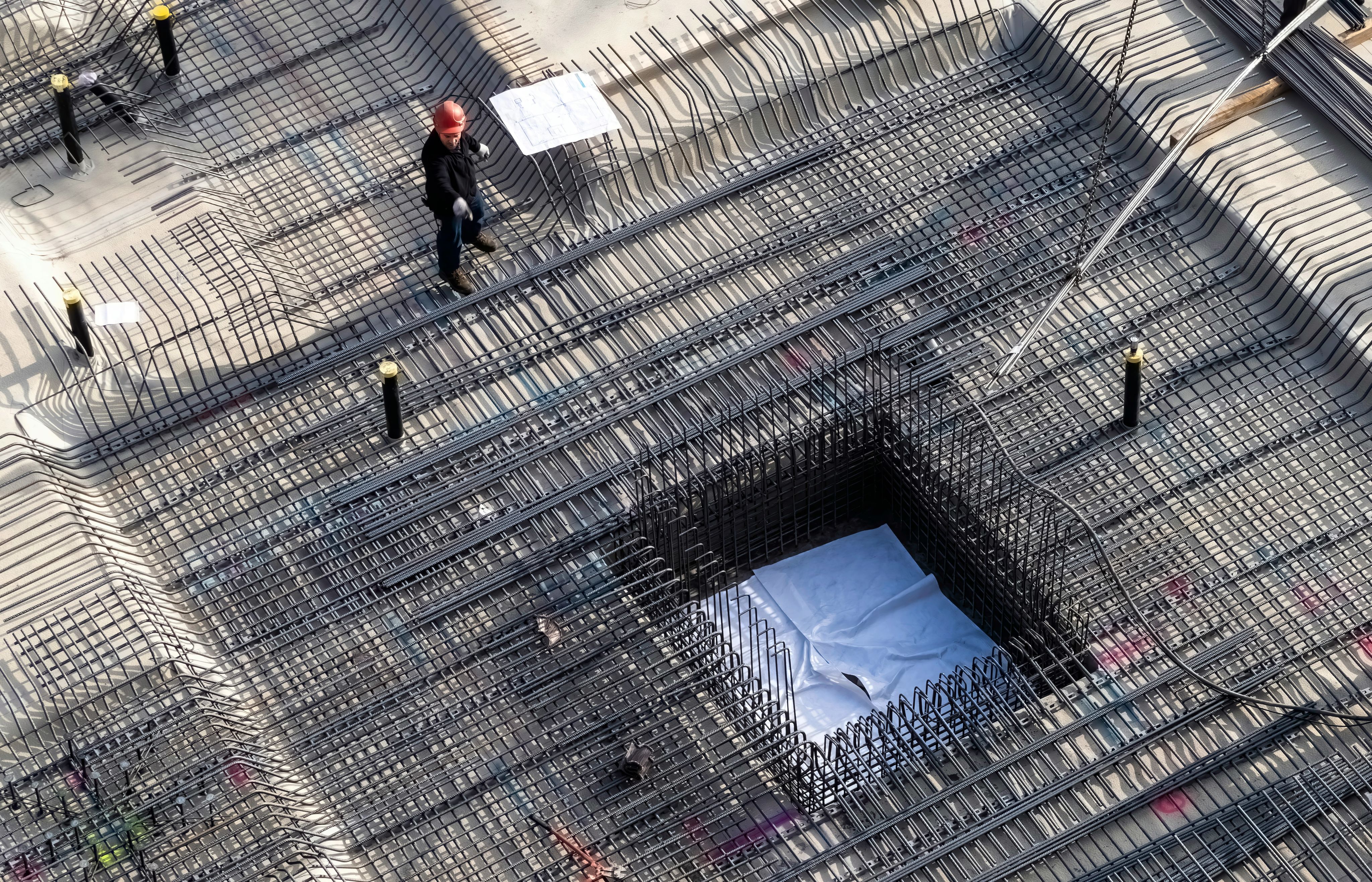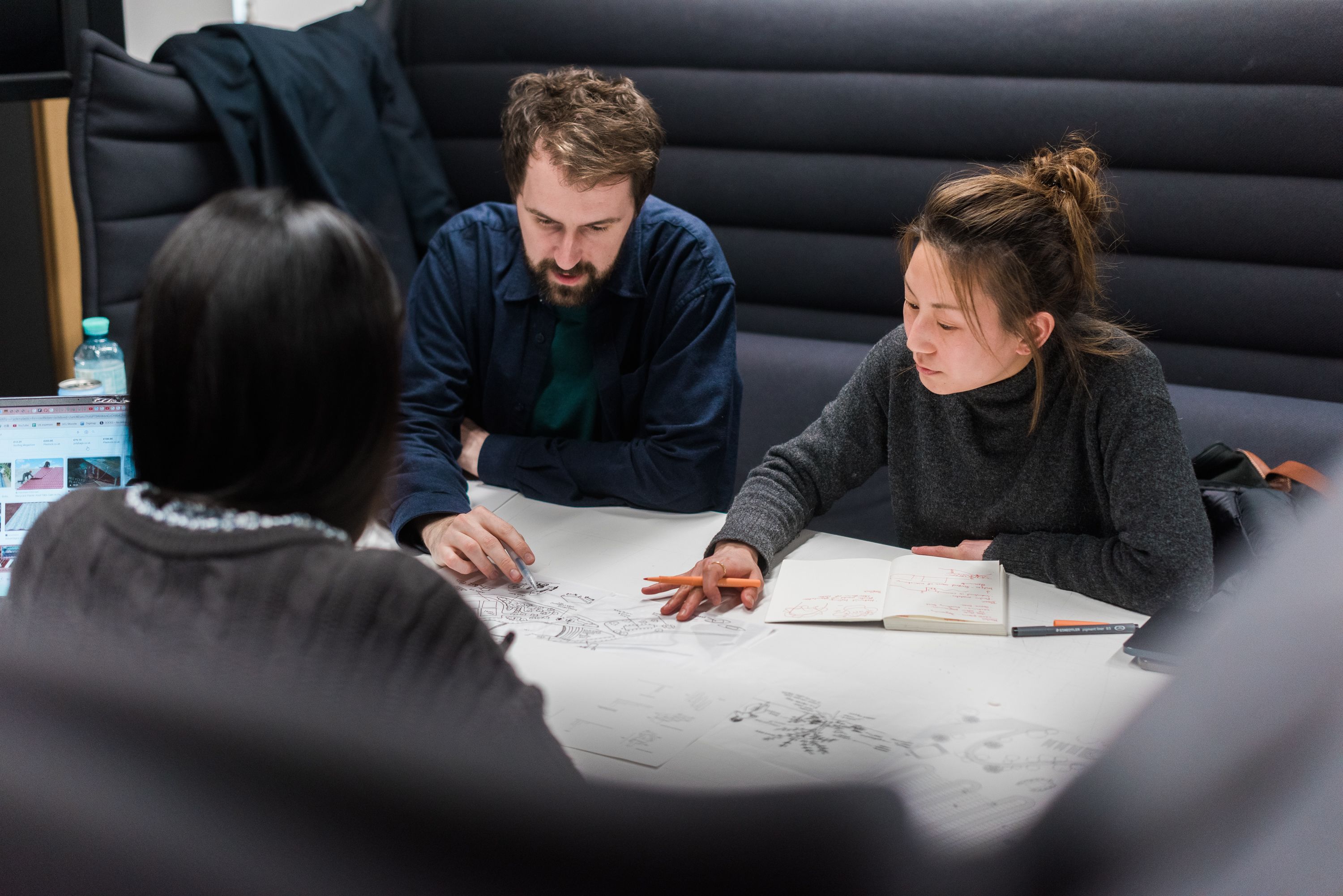Managing uncertainty in megaprojects
New tools can help major infrastructure projects stay on track – and on budget – by planning for uncertainty

‘Megaprojects’ are loosely defined as large-scale infrastructure projects costing more than $1 billion of both public and private investment, and taking several years to build.
Another defining characteristic of megaprojects is their failure to go to plan. Only 8.5% of megaprojects are completed within the original budget and timeframe.
This planning problem affects every global region and economy. From China’s ‘Ghost Cities’ to the California High Speed Rail, all nations are united in their seeming inability to plan and implement major infrastructure projects.
As the UK government’s abandoned HS2 high speed rail project showed, this isn’t due to a lack of effort or investment in planning. The initial documentation ran to 61,000 pages and more than 20 million words of consultation, strategy and research.
“I think they didn’t account for the risk properly,” says Dr Michel-Alexandre Cardin of Imperial College London, discussing the recent problems afflicting HS2.
“That’s the challenge. There are very few tools at the moment to help you plan ahead. Current methods like net present value analysis or systems engineering tools like the V-model don’t account well for uncertainty in early conceptual design activities – and often lead to rigid systems that don’t adapt well if market conditions change.
“Given ongoing climate uncertainty and global transitions to net zero, the more traditional approaches leave infrastructure projects highly vulnerable to planetary changes and disruptions.”
“It’s impossible on a 15-20-year delivery cycle to account for all the possible risks. Something else is going to happen. Next year, or in five years, maybe in 10 years.”

Dr Ilias Krystallis of UCL’s Bartlett School of Sustainable Construction explains: “It’s impossible on a 15-20-year delivery cycle to account for all the possible risks. Something else is going to happen. Next year, or in five years, maybe in 10 years. The project owner has to pay extra to build in robustness against that uncertainty.
“So you pay for all these premiums accounted for in risk management, but then that unknown event element, whatever that may be, you’ll still have to pay for that on top. And that’s why the costs are escalating.”
Michel and Ilias are combining the efforts and research of UCL and Imperial College London to find new solutions.
Michel argues, “we need a new mindset, but also new tools and methodologies to guide designers and planners on how to think about uncertainty very early on in the design process, where most important decisions can be made at the lowest cost.”
Real options logic
The principles of real options logic, a management and decision-making approach which has been steadily gaining traction for the last 20 years, could provide the ideal theoretical frame on which to design new tools to help us reckon with uncertainty.
As Ilias says, “in finance, a real option gives the decision-maker ‘the right but not the obligation’ to take specific future actions at a specified cost in irreversible investment projects.
If we have ‘optionality’ in our decision-making process then we can engineer various strategies to adapt dynamically to uncertainty – such as the option to expand capacity if demand is higher than expected, the option to abandon projects doomed to failure, the option to wait and see how a given market evolves before investing or the option to switch between different production materials and outputs.
“In the context of major infrastructure projects, decision-makers then have the flexibility to adapt and adjust their strategies in response to changing conditions as circumstances evolve.”
These engineering options can unlock additional value in projects and make them more sustainable and resilient over time. However, the real options logic approach might not feel instinctive to planners from an engineering background, Michel explains.
“In engineering (and hard sciences in general) you are trained to find the ‘right answer’. There’s little room for uncertainty, so engineers and designers are often uneasy with real options thinking.
“Real options isn’t saying, ‘try and get the right answer’. It’s saying, 'stack the cards in your favour, allowing you to make these future decisions when you have more information’ - which is completely not the way that we’ve been training engineers, civil engineers and mechanical engineers.”
“Real options isn’t saying, ‘try and get the right answer’. It’s saying, ‘stack the cards in your favour, allowing you to make these future decisions when you have more information’.”

Real options logic in real-world projects
There are many examples of successful real options logic implementation.
Ilias drew on the UK National Health Service (NHS) as an example of a project owner that has consistently promoted embedded flexibility approaches when meeting the changing needs of health provision in the UK.
From as early as Lord Darzi’s report in 2008, through subsequent technical papers published by the NHS, the NHS has consistently pioneered flexibility in project design.
“I think they’re innovating in that space,” said Ilias. “I haven’t come across any major project owners that have done this kind of exercise.”
Michel added the NHS Nightingale hospital – a temporary healthcare site erected within nine days at London’s ExCeL centre at the height of the COVID-19 pandemic – as a further example of how the NHS’s commitment to flexible design provided additional resilience and flexibility when needed. Despite some criticisms, it serves as a useful example where early planning can help deal with a sudden surge in critical care capacity needs.
For specific examples of large-scale infrastructure projects that have demonstrated real options logic, we can look to the 25th de Abril bridge that connects Lisbon with Almada in Portugal.
Initially constructed in the 1960s (and coming in six months ahead of schedule), the bridge was designed to support later phases of construction, with additional capacity included beneath the bridge for more car lines and the railway line which were added in the 1990s.
Another example of embedding design flexibility which Michel has long admired is the Health Care Services Corporation building in Chicago, which was constructed in two distinct phases of 33 and 24 floors each.
“From a design standpoint, it was completely different from either a 33-storey or a 57-storey building. They had to plan for the additional load, but they didn’t know if they were going to use it.
“At the time, they didn’t have the need for all that office space, but they figured potentially later they were going to need it. 10 years later, they decided to exercise that option, and built the additional 24 floors.
“What was interesting is that it was the same team. Because often, a new team takes over the infrastructure and there’s no record keeping or continuity, and the flexibility gets lost. They don’t know it’s there.”
Barriers to embedded flexibility
This lack of continuity is one of the reasons Michel believes real options logic still isn’t the default decision-making approach for large infrastructure projects.
“Keeping track of your options over time can be an issue. Flexibility can be exercised many years after it was embedded in a system, so it needs to be documented and managed properly over time across an organisation.
“This can be a challenge, and the bigger the organisation, the more difficult it is.
“It’s a type of long-term, strategic decision which isn’t often ‘rewarded’ when companies aim for short-term objectives. Also, different stakeholder groups may have conflicting interests, which may hamper implementation of these solutions.”
Ilias has spent the last year working with one of his PhD students on a systematic literature review to explore the barriers and challenges preventing widespread adoption of real options logic in project management.
“We’ve identified many, many contributing factors to these barriers to flexibility.
“We’re trying to make sense of them by thinking at different levels, with contributing factors at each level.
“At the individual human behaviour level, there’s factors such as lack of competence and our own bounded rationality to consider.
“At the organisational level, the organisational culture plays a big part – how welcome is it to change the availability of resources – financial resources, human resources, material resources?
“Then at the inter-organisational level, we have to consider the different stakeholders and parties negotiating the level and value of flexibility.”

Building a flexible community
Both academics are well supported by their respective institutions to advocate strongly for real options logic approaches in project management.
The Bartlett School of Sustainable Construction teaches risk and uncertainty management across a suite of master’s programmes, including project management, digital engineering and economics and finance.
This includes both quantitative methods such as real option valuation and Monte Carlo simulations, as well as qualitative approaches using Harvard-style case studies, which immerse students in decision-making roles in a range of real-world management situations and scenarios.
At Imperial's Dyson School of Design Engineering, Michel and his team are currently developing and testing a range of methodological and computational tools to translate the fundamental principles of real options theory into practical usage.
These tools draw on a broad range of modelling approaches including machine learning and stochastic optimisation and are being tested in joint studies with leading global companies in energy, transport and infrastructure advisory.
Michel and Ilias are also involved in a range of collaborative projects to help others in the industry engage with the principles of real options logic. These include further research papers, a special issue of a top engineering management journal devoted to real options logic, and a flexibility community building project with members from across Asia, Europe and the US.
Michel explained their mutual enthusiasm and desire to disseminate this approach as widely as possible.
“With everything that's happening, particularly around investments for decarbonisation, there's a clear need for this kind of thinking. There's so much uncertainty at the moment, a lot of companies are suffering from investment paralysis.
“They don't know what to do or how to manage the risks and the uncertainty. For now, they're holding back, hoping that the government will help them solve all their problems – but that’s not going to happen because the government is facing similar challenges.”
Photo by Ricardo Gomez Angel on Unsplash
Photo by Ricardo Gomez Angel on Unsplash
Photo by Troy Mortier on Unsplash
Photo by Troy Mortier on Unsplash
“For megaprojects typically worth $100 million - $1 billion, the value of flexibility can be enormous.”

The price of resilience
Both Ilias and Michel stress that using real options logic to embed flexibility is a long-term strategic decision which project owners must accept may increase their initial costs as compared to a rigid solution.
“There’s no free lunch here,” says Ilias.
“We have to accept that if you embed flexibility, the project could be more expensive at the beginning compared to a more rigid alternative, but the savings could be huge at the end.
“We recently published a paper in the American Association of Civil Engineers. We evaluated Heathrow's third runway expansion, using the master plan that was published a couple of years ago.
“We took that master plan and said ‘ok, now what happens if we embed flexibility? How much is it going to cost?’
"We found that the upfront costs went up by 10-20% of the original budget. But if you don't make these accommodations, and you leave the project as is, if any of these scenarios happen, you're in trouble.
“Our research shows that flexibility can unlock economic value improvement ranging routinely between 20-30%, and often more than 100%, as compared to rigid (or robust) solutions.
“For megaprojects typically worth $100 million - $1 billion, the value of flexibility can be enormous.”
About the authors
Dr Ilias Krystallis
Associate Professor in Engineering Project Management, The Bartlett School of Sustainable Construction, UCL
Ilias' research encompasses a broad range of topics within the field of project management and the built environment. He has made significant contributions to the nexus of engineering management and project studies field through his research, teaching and enterprise activities. A civil engineer by trade, Ilias has worked in the built environment sector such as railways, metro, highways, national heritage buildings, and urban developments for more than 10 years. With a proven history of conducting ground-breaking research, he contributes his expertise and collaborative spirit towards tackling urgent global issues through a project lens.
Dr Michel-Alexandre Cardin
Associate Professor (Senior Lecturer) in Computational Aided Engineering, Imperial College London and Director of the Strategic Engineering Laboratory, the Dyson School of Design Engineering
Michel's research focuses on translation and implementation of principles from real option theory for engineering design practice. His work has contributed to the development of a new paradigm focusing on flexibility in engineering design via practical design methodologies and digital technologies rendering future energy, transport, and space infrastructures more sustainable, resilient, and better prepared for an uncertain future.
Learn more about infrastructure project management
UCL's Bartlett School of Sustainable Construction offers a range of leading undergraduate, master's, MBA and research programmes to build your skills as a leader in the construction sector. We're rated the UK's #1 construction school by the Guardian Good University Guide 2023.
Story produced by All Things Words
© UCL The Bartlett 2024







